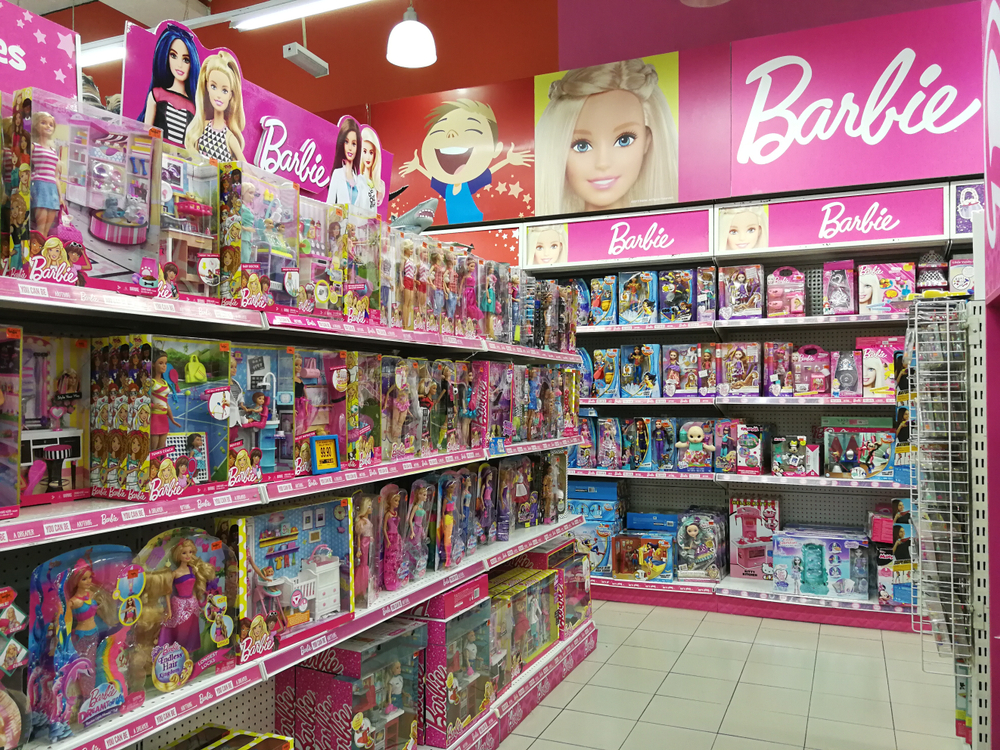With a new Barbie live-action movie in cinemas this week, a massive marketing campaign has everyone talking about the new Margot Robbie film as well as Barbie as a pop culture icon. In this current moment, Barbie is being celebrated as a beloved childhood toy, albeit one with some aspects that don’t quite live up to feminist ideals. But are we giving Barbie a free pass?
For years there have been mainstream concerns about children playing with Barbie dolls, with parents worried about the doll as a contributing factor in establishing unrealistic body expectations (leading to young people developing body dysmorphia) and that Barbie was more interested in fashion and her relationship with Ken, rather than being focused on professional and personal success.
These concerns become even greater when we consider that Barbie dolls also have a long association with education, with many incarnations of Barbie as a teacher, along with her serving as the focus of education programs run through schools.
Barbie as a teacher
One the many careers held by Barbie over the years has been as a school teacher. She began work as a teacher back in 1965, the same year that she also began work as an astronaut and a fashion editor.
Since then we have seen Barbie employed as a teacher across multiple disciplines. She has worked as a primary school teacher, art teacher, Spanish language teacher, swim class teacher, ballet teacher, music teacher, science teacher, and an English language teacher.
Oh, and once she was even a yoga teacher. Flexible in both career and body.
Like real-life teachers, sometimes her personal life and preferences also got Barbie into trouble. The 1995 Teacher Barbie toy in the US had to be recalled thanks to a production error that made it seem like she wasn’t wearing any underwear. Those recalled dolls now sell for hundreds of dollars.
Barbie the teaching aide
As part of the ongoing marketing of Barbie, manufacturer Mattel has run a number of Barbie-related educational programs in schools, to varying levels of educational benefit.
In 2019, Mattel launched the Barbie Dream Gap Project Curriculum in California. The company claims the objective of the program was to expand kids’ interests in a broader range of careers, increase leadership aspirations for girls, inspire girls to identify females as “really, really smart” and believe that girls can do anything.
Since its initial launch, like many COVID-impacted programs in recent years, the program has since moved online for home learning with six interactive lessons.
In the UK, a different approach was taken. Earlier this year Mattel launched the Barbie School of Friendship based on neuroscientific research commissioned by Mattel and undertaken by Cardiff University. The program aims to increase empathy, social information learning, and social emotional learning.

It is understandable that people may be cynical about programs like this. EducationDaily spoke with Narelle Lancaster, an advertising lecturer in the School of Media and Communication at RMIT University, who suggested that people have become thick-skinned to corporate efforts to promote social cohesion and progression.
“Campaigns by brands purporting to “do good” almost always have a financially-motivated agenda like a grant or tax deduction, or they are part of a marketing strategy. Most consumers see through it – people question it nowadays. And they’ll go to social media to criticise the campaigns,” Ms Lancaster explains.
There’s a conflict between the ideals of education and the corporate need to market products, which many of us see and feel uncomfortable with. EducationDaily spoke to Dr Shasha Wang from the School of Advertising, Marketing and Public Relations at QUT Business School, who understands the concerns.
“There are obstacles and reasonable arguments against it. Some parents may be concerned about the idea of using branded material in education, considering previous brand associations with the character,” Dr Wang says.
But Dr Wang admits that there are benefits to branded programs like this that shouldn’t be overlooked.
“The priority needs to be focused on what keeps kids engaged. Why not have children learn something from a character they like? If that character is teaching them to be confident and resilient, that is a positive.
“I’m fine with branded content used in schools if they are used properly as examples, but the motivation can’t be to increase how much the kids like the branded products,” Dr Wang says.
Barbie as a teacher of all the wrong lessons?
While Mattel has certainly made efforts to evolve Barbie, with the new movie being an example of this, a lot of the concerns parents have had about the dolls haven’t been addressed satisfactorily. She may have more career diversity and a healthier attitude about gender equality, but she still looks the way that she does. And materialism is still a core focus of the brand.

In a conversation with Dr Lauren Gurrieri, an Associate Professor, Marketing School of Economics, Finance & Marketing at RMIT University, she told EducationDaily that parents should stay mindful of engaging with programs based around figures like Barbie.
Dr Gurrieri explains that: “Whilst doll play can promote positive development opportunities for children, we need to be mindful of what type of doll we are talking about. Research over many decades has highlighted the poor mental and physical health and wellbeing outcomes of Barbie play, especially for young girls. This includes thin ideal internalisation and body dissatisfaction, which promotes poor body image and self-esteem. For example, one study showed that girls ages six to eight who played with Barbies complained more about their bodies than girls that played with dolls with more realistic body proportions.
“Whilst it is important that brands look to take responsibility and contribute to society beyond profit maximisation, we need to reflect on what the product is seeking to achieve and the possible harms that may arise. In the case of Barbie, the doll continues to promote narrow ideals and an unattainable beauty standard”.








